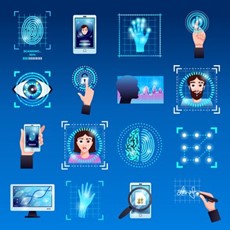Optical Character Recognition , is the electronic conversion of typewritten, handwritten, or printed textual images. This process involves encoding the text into a machine-readable text file.
With OCR, a large number of paper documents can be scanned into machine-readable text, regardless of the language or format in which they are written. This technique not only simplifies storage but also makes data available that was previously difficult to access.
Just think about the wealth of data sitting in boxes of paper archives in a city or government office, for example. These images and documents can be scanned as text documents, document photos, or scene photos (for example, to decode text on a billboard).

How does Optical OCR work?
The challenge of OCR lies mainly in the difficulty of recognizing the various fonts that multiply the ways each symbol is written. This means that before selecting an OCR algorithm, the image itself must be preprocessed to ensure readability.
The OCR matches the text in an image with a digital database of corresponding letters and numbers. Then, it reprints or archives it more clearly, sharply, and with much greater accuracy. It’s akin to the human ability to read text and recognize patterns and characters. But this time, the quality is better, and the process is quicker. However, there are a few steps to follow :
Step 1: Image Preprocessing
The first step is to enhance the quality of the image to ensure accurate data output. The optical character recognition engine identifies and corrects errors and issues in the image. Four techniques are commonly used for this step:
1. DE-skew: This technique straightens and corrects the angle of the photo;
2. Binarization: Converting the image into black and white separates the text more accurately from the background;
3. Zoning: This technique identifies columns, rows, blocks, captions, paragraphs, tables, and other elements. It’s also known as layout analysis;
4. Normalization: This process reduces noise by adjusting the pixel intensity values to the average values of surrounding pixels.
Step 2: Segmentation
The second step is segmentation, a process to recognize an entire line of text at once. It consists of two stages:
1. Word and Text Line Detection: This stage identifies lines and the words within them;
2. Script Recognition: This stage identifies the script based on documents, pages, text lines, paragraphs, words, and characters.
Step 3: Character Recognition
The third step is character recognition. The image or document is divided into parts, sections, or zones, and then the characters within each of them are recognized. There are two approaches for this:
1. Matrix Matching: This approach compares characters to a library of character matrices;
2. Feature Recognition: This is done using images, where the shape, height, or size of a character is compared to those in the existing library.
Step 4: Post-processing of Output
The fourth and final step is the post-processing of the output, which includes techniques to ensure precise results. The data is first detected, then corrected if necessary. Next, the extracted data is grammatically verified by comparing it to a character library.
What is optical character recognition used for?
Optical character recognition can be used in various application domains, including office automation, document management, archiving, word processing, and automated data entry.
The accuracy of OCR results can be influenced by various factors such as the quality of the source material, font type, language, and character legibility. Advances in image processing and machine learning technologies have improved the accuracy and performance of OCR.
OCR is an important technology that helps businesses and organizations optimize their workflow processes and improve efficiency.
If you want to edit, merge or convert PDF files, you can use our free apps by clicking on this line.
If you want to know more about PDFs please read this Article.
else you can see this article on Wikipedia related to PDF.